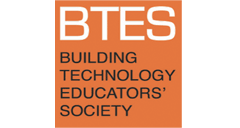Phenomenology and Performance: Technology | Architecture + Design Through Music
DOI
https://doi.org/10.7275/e4yd-mc93
Abstract
“Phenomenology” is a design philosophy that was first used to criticize the modern movement and as an urge to return to “place-based” architecture. Juhani Pallasmaa further expanded the ideas by introducing the phenomenological aspects of kinesthetic and multi-sensory perception of the human body into this architecture theory.
“Performance Based” design, with the help of computational tools, is a design paradigm within architecture that has emerged in the 21st Century by using building performance as a guiding design principle for the design of cities and buildings. Current interest in building performance as a design paradigm is largely due to the emergence of sustainability as a defining socio-economic issue and the recent developments in technology and cultural theory. “Phenomenology” and “Performance Based Design, students were asked to develop an interpretive building component (structure, skin, space) inspired by the relationships found between music and architecture. Music has distinct phenomenological qualities that can be thought of in conjunction with the spatial experiences of architecture. Music also has distinct computational or technical qualities that can be thought of in conjunction with building performance and the tectonics of architecture.
Music and architecture have many things in common and have many divergent means for creation. Rhythm is the underlying pattern and found in the beats / repetition of music as well as the structural elements of architecture. Texture is heard in layering different instrument voices and seen in the composition of building materials. Harmony is achieved through note combinations within a musical work or in architecture through the successful relationship of individual spaces becoming one cohesive space. Dynamics in music and architecture deal with quality and emphasis both needing hierarchy and identity as well as feeling. Musicians experience music in very deep ways, e.g. subtle moments in songs / tunes that some people might not notice. Architects similarly feel and experience space in deeper ways than most non-architects. When architects move through space, it becomes a phenomenological journey of tectonic discovery.
The ideas and artifacts were presented in conjunction with the playing of the music initially chosen. As with many art forms, their subjective appreciation and evaluation was quite varied depending on the listener and observer and their personal sensitivities and biases. As a design critic and musician who plays Celtic music, final evaluation was prefaced by the design conversation that led up to the final submission as well as my own phenomenological and performative understanding of the music. Because of these mutual behaviors, music and architecture share a relationship generated by subtle experiences (phenomenology) and underlying computational codes (performance). In that shared relationship lie the creative potential for mutual understanding and discovery.
Recommended Citation
Stivers, Jerry
(2019)
"Phenomenology and Performance: Technology | Architecture + Design Through Music,"
Building Technology Educator's Society: Vol. 2019
Caryn Brause, Peggi L. Clouston, Naomi Darling (Eds.), Amherst, MA, 2019.
https://doi.org/10.7275/e4yd-mc93
Available at:
https://scholarworks.umass.edu/btes/vol2019/iss1/51

